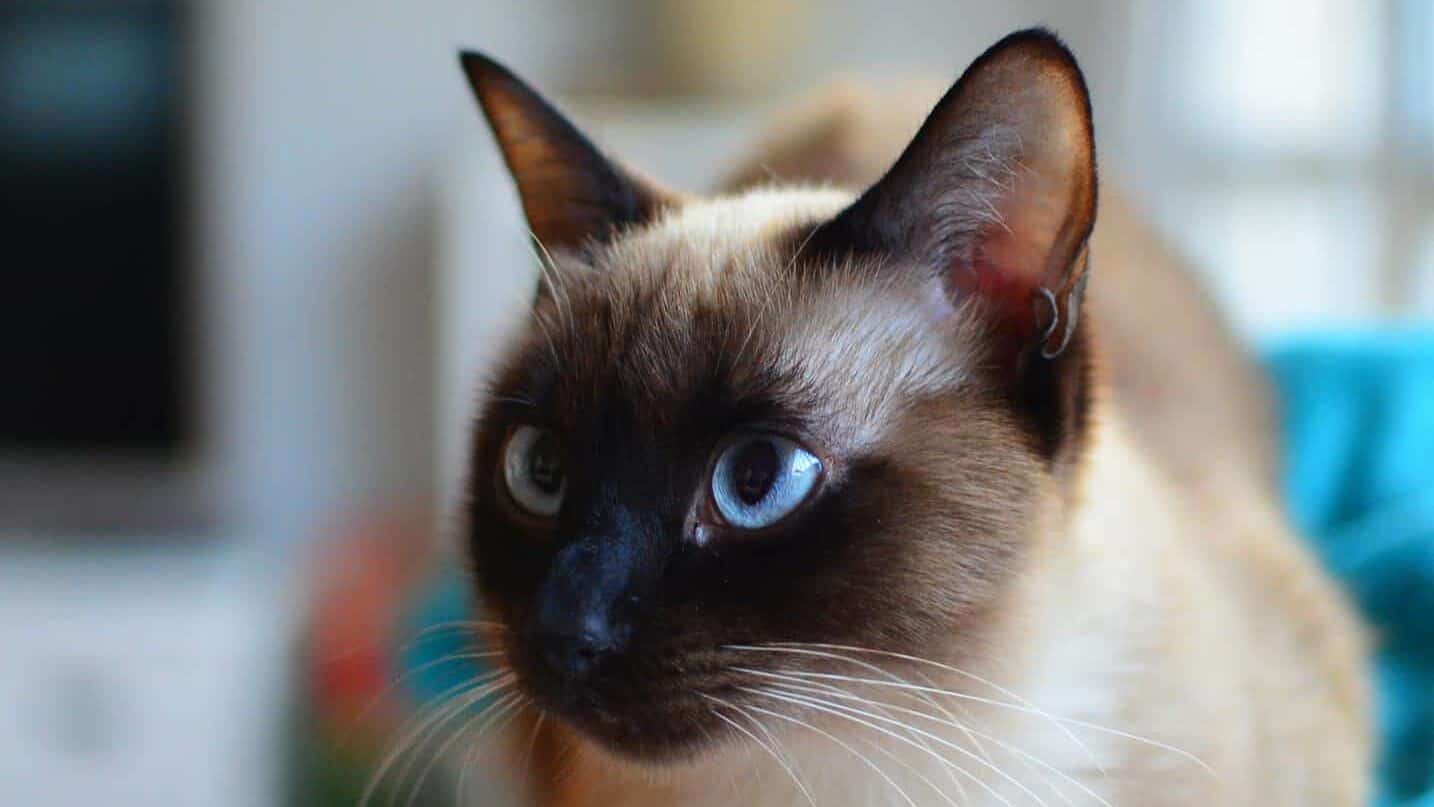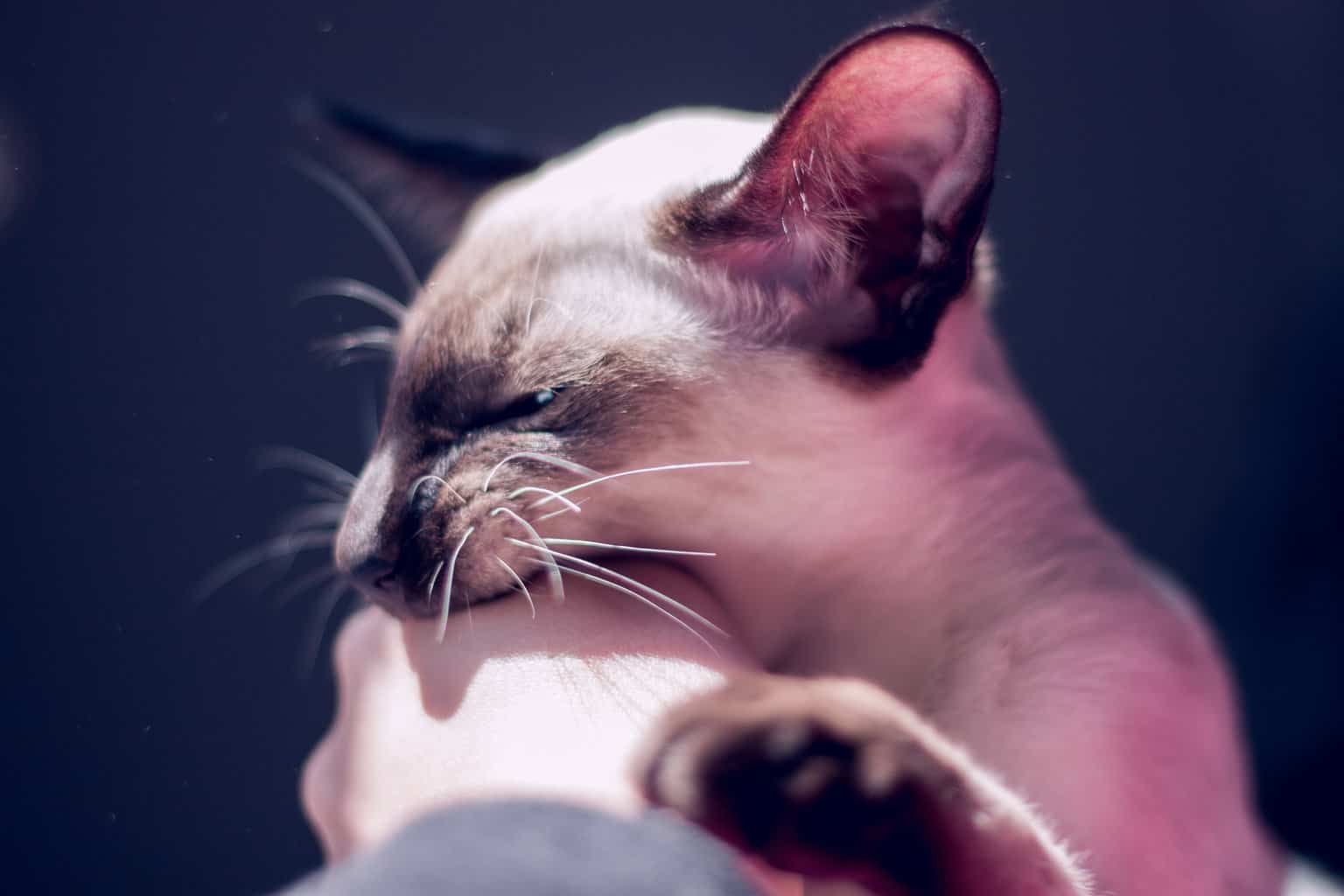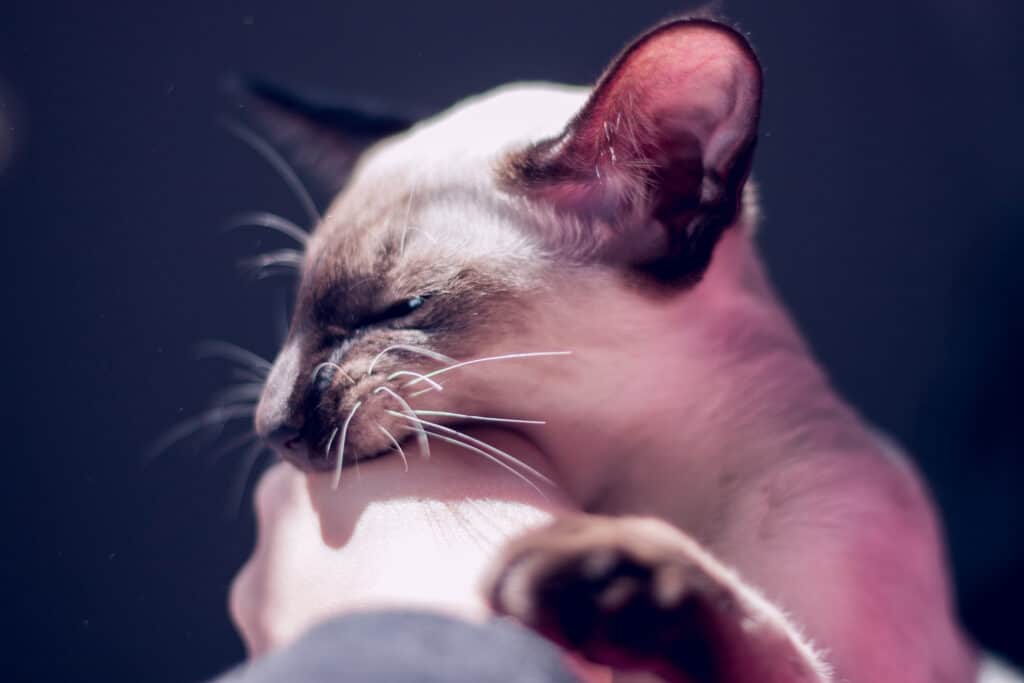Siamese cats have one of the most unique looks among different breeds. Their dark extremities and face contrasted with a white body make for beautiful markings, and those incredible blue eyes complete the look.
But if you’ve ever seen a Siamese kitten, you may wonder where all that coloring is and what causes the color to develop the way it does.
Siamese kittens are born completely white and only start developing their color points when they’re about one week old. Usually, they reach their full color after about six weeks. Throughout their lives, some Siamese cats change color slightly.
Believe it or not, there’s a lot to tell about how a Siamese’s coat and colors develop and since you’re reading this, I bet you want to know more about it.
Actually, much of their ‘coat science’ is based on how they are made up genetically.
This article will explore how Siamese cats get their color and why they change color over the years.
Siamese cats are Albinos
Siamese cats are actually albinos, which means they have no (or very little) pigments in their skin/fur to give them color.
A Siamese cat’s natural fur color is white/creamy white. Despite this, they look very different (and colorful) compared to nature’s other albino animals.
This is because Siamese cats have a temperature-sensitive albinism gene that gives them distinctive traits such as those enchanting blue eyes and darker points (their tail, paws, ears, and face).
It also causes some Siamese to be cross-eyed, although this trait has been bred out of modern Siamese cats because it was undesirable.
Siamese kittens
At birth, you can see the albino coming through since almost all Siamese kittens are born entirely white and develop their darker areas as they age.
The areas that will turn darker over time are their face, paws, ears, and tail. This has a specific reason which we’ll explain further down.
The darker areas in a Siamese’s coat are referred to as ‘color points’. This is why Siamese breed variations are named based on the color of these points. For example, Chocolate Point, Lilac Point, Flame Point, or Blue Point.
Siamese kittens typically begin showing signs of coloration at one week of age and will have reached their full color after reaching maturity around six weeks of age.
Temperature-dependent darkening
Fascinatingly, temperature-sensitive albinism causes the distinctive markings of Siamese cats and gives them their darker colors.
This is all thanks to a gene known as the Himalayan gene, which activates pigments in the coat based on temperature conditions.
In layman’s terms, the Himalayan gene causes a Siamese’s fur to darken in color when their body temperature is below 100 degrees Fahrenheit (38 degrees Celcius). In areas where their body temperature is above that temperature, their fur will remain white.

How color points are formed
The reason why Siamese kittens are born white is that inside their mother’s womb, the temperatures are at or above 100 degrees Fahrenheit, which activates the Himalayan gene and colors their coat white.
After birth, their temperature regulates itself in the range between 100.4 and 102.5 degrees Fahrenheit (39-39 degrees Celcius).
However, just as with humans, not all parts of a cat’s body are the same temperature. The ‘points’ of a cat’s body are generally cooler than 100 F, which causes the effects of the Himalayan gene to darken the fur in those areas.
That’s how Siamese cats get their distinctive markings. However, remember that some coloration changes are simply a process of aging, and your few-weeks-old kitten may develop different color patterns and darkness with age.
Seasonal Changes
AsYouditions, you may notice your Siamese cat’s colors change slightly. during different temperature conditions
In the summer, Siamese cats shed their coat and adopt a lighter shade due to the higher temperatures.
This is a gradual process and it’s not like they change colors like a Cameleon.
At the end of fall, on the other hand, a Siamese cat’s coloring will be at its most distinct as the temperature drops and the coloration is more apparent.
This is all assuming your Siamese lives in a place with pronounced seasons; warmer summers and colder winters.
You may also notice a slight darkening in your cat’s overall appearance if you move to an area with a colder climate and vice versa.
Medical Conditions Causing Color Changes
When should you be worried?
There are some medical conditions that you should be aware of.
In case your Siamese cat’s coat changes dramatically over a short period of time, this can be due to a fever.
Fever can be very dangerous to cats and is life-threatening. Because of the increase in the cat’s internal temperature, a Siamese’s fur can take on a much lighter shade.
A fever is often accompanied by other symptoms such as loss of appetite, lack of energy, shivering or rapid breathing, and decreased water consumption.
If any of these symptoms persist and your Siamese’s color continues to change, it’s best to take them to get looked at by your local veterinarian.
A lightening of the coat may also indicate improper dietary care. Cats may suffer from a tyrosine deficiency which disturbs the production of melanin in the body, causing a lightening of fur.
Read more about Tyrosine, what it is and how it affects cats.
Always make sure your cat is getting the essential vitamins and nutrients they need in a balanced diet of wet, dry, and fresh food.

Siamese cats change color with age
Just as our hairs turn grey due to a reduction in melanin production, a Siamese cat will also get grey hairs as it ages.
This typically doesn’t indicate any alarming underlying condition; it’s just a cat’s body slowing down and adapting to a new pace of life.
Our final thoughts
Siamese cats are renowned for their beautiful coat and gorgeous eyes, but as it turns out, they are actually albinos.
The Himalayan gene, which darkens the coat based on different temperature conditions, activates when a kitten is outside the womb, causing Siamese kittens to be born white and develop their color starting at a week old.
Because the gene darkens the coat more when temperatures are lower, extremities that don’t get as much blood flow―face, ears, tail, legs―darken. As a result, giving Siamese cats their distinct two-tone look.
This look may change somewhat as they grow into adult colors, but it can also occur due to seasonal changes affecting your cat’s internal temperatures.
As your cat sheds and develops a new coat in the summer, their coat will lighten in color.
In rare cases, a sudden color change can be due to underlying conditions t affecting your cat’s body negatively.
Fevers raise the internal temperature, and dietary imbalances interfere with melanin production, evidenced by a lightening of the skin.
Lastly, old age can play a role in the gradual changing of coat color, tending to turn it more greyish as the cat ages.
Love reading about Siamese cats?
Have a look at our other great content about this wonderful cat breed
Our most popular article:
Introduction to Siamese Cats
Everything you need to know.
Or have a look at these popular reads from our website…
-

Why Do Siamese Cats Always Have Blue Eyes?
If you’ve ever looked up from work to see your cat staring at you, then the first thing you probably […]
-

Why Does Your Siamese Cat Bite So Much?
Siamese cats are a popular breed for their distinct beauty and character, so you might be surprised to find out […]
-

Wedgehead Siamese Cats Versus Traditional Siamese Cats
Siamese cat breeds are consistently ranked in the top 2 or 3 of the most sought-after cats in the world […]
References
https://epicpetclub.com/do-siamese-cats-change-color/
https://siameseofday.com/do-siamese-cats-change-color/





